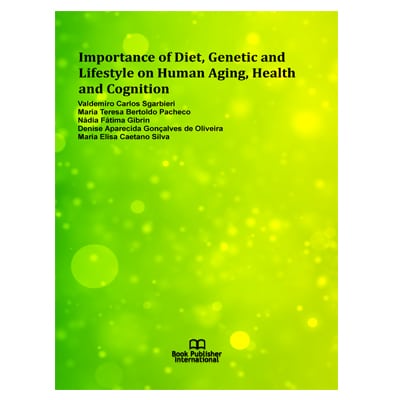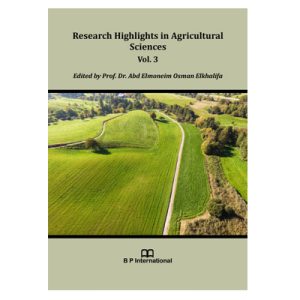Food has been perceived classically as a means to provide energy and build material to the body, now its ability to prevent and protect against diseases is starting to be recognized. Special research over the last 5 years has provided exciting evidence for the influence of dietary factors on specific molecular systems and mechanisms that maintain mental function.
Recent knowledge supports the hypothesis that, beyond meeting nutrition needs, diet may modulate various functions in the body and play detrimental or beneficial roles in some diseases.
The book “Factors on Aging, Memory and Cognitive Decline” brings together the most current information on the biochemical, physiological aspects that are involved with aging, and its implications.
Professor Valdemiro Sgarbieri, Emeritus Professor at the University of Campinas (UNICAMP) a leading researcher in Food Biochemistry, has masterfully learned to bring clear understanding of the current topic. The chapters describe the topics in sequential way in order to build the essential understanding.
Works such as this book are keys to an interdisciplinary understanding in relation to food, nutrition and health. This book aims to be a fundamental reference for people who want to deepen into this field, particularly researches and professionals working with interdisciplinary aspects of health and food.
Chapter 1 and 2 tries to conceptualize and update a modern understanding of published researches on the main factors and mechanisms responsible for cells and tissues degradation which reflects on acceleration of aging, impacting on human health and, ultimately on memory and cognitive decline. Chapter 3 deals with the concepts and metabolic importance of some non-nutrient dietary compounds, highly distributed among food items mainly carotenoids, polyphenolic compounds and sulphur-containing substances. The importance of these so called “non-nutrient dietary components”, in human health and diseases has been recognized mainly from the middle of last century and continues to be as important topics of research today. A great number of research and publications have recognized the importance of these compounds mainly as antioxidants, anti-inflammatory, and playing important roles in metabolic processes which may lead to metabolic syndrome and some chronic diseases. Chapters 4 and 5 describe mechanisms by which some dietary components and their metabolites can act, influencing memory and cognition through sleep disturbances and depression which are psychophysiological problems leading to neurological dysfunctions and neurological diseases such as; Alzheimer’s and Parkinson’s diseases, schizophrenia, depression and other related diseases. Chapter 6 present a condensed but up todate description of what scientists and the medicinal practice already know about the fundamentals and the complex etiology of the above mentioned neurological diseases, as an attempt to control or avoiding the progress of such neurological disturbances, once the cure have not been achieved yet. Chapter 7 and 8, present the most authorized description of best known common foods and food components impacting favourably on human brain health, brain aging and cognition. Several of these foods are currently present in our daily diet and are presently under intense investigation by our scientific community. Chapter 9 discuss with certain deepness and details the metabolic syndrome, considered a worldwide problem, which has obesity as a primary leading cause of dyslipidaemia, cardiometabolic diseases, type-2 diabetes, hypertension and other metabolic dysfunctions leading to a number of chronic diseases related to aging, loss of memory and cognitive decline. Tentative approaches to control obesity and overweight are discussed, including dieting, experimental management, and supplementation of normal dietary profile. Calory restriction combined with improved nutrition and healthy lifestyle is presented as the most effective approach to control body weight gaim, obesity and metabolic syndrome. Chapter 10, presents and discusses some healthy characteristics of what became known in our days as “Mediterranean diet” or dietary Mediterranean style. The general composition, dietary components and the eating habits of population in the countries along the Mediterranean coasts and Mediterranean islands are discussed. These dietary profiles and lifestyle became known worldwide for its healthy characteristic and has been published in a large number of scientific articles, books and review. Chapter 11, on the other hand, describes a number of problems associated with the western dietary profiles of countries of Northern and Western Europe, Canada, United State (USA), Mexico and South America including Brazil. The main problems associated with the Western dietary profiles and their consequences on human health and diseases have been described. At end of chapter 11, a proposition is made as to how the scientific community, the food industries sector and the governmental agencies of Brazil, in particular, could joint efforts and get organized aiming at improving food quality and food development to solve some of the chronic problems in the areas of food science, food technology and nutrition to the benefit of the health of the Brazilian population.
The text is a compilation of todate expanding knowledge of several sciences, such as: food science, chemistry and biochemistry of foods, nutritional sciences, medicinal and pharmaceutical sciences. Although not dealing with the deepness and thoroughness to satisfy scientists from each of the above mentioned areas, it brings to attention the inter-relationship among the various areas of knowledge in the different chapters of the text, the importance and beauty of integrating the various topics in the context of a multidisciplinary approach. On account of being multidisciplinary but integrated on its concepts the text should be of interest to professors and students in the areas of food science, nutrition, pharmacology and medicine.





